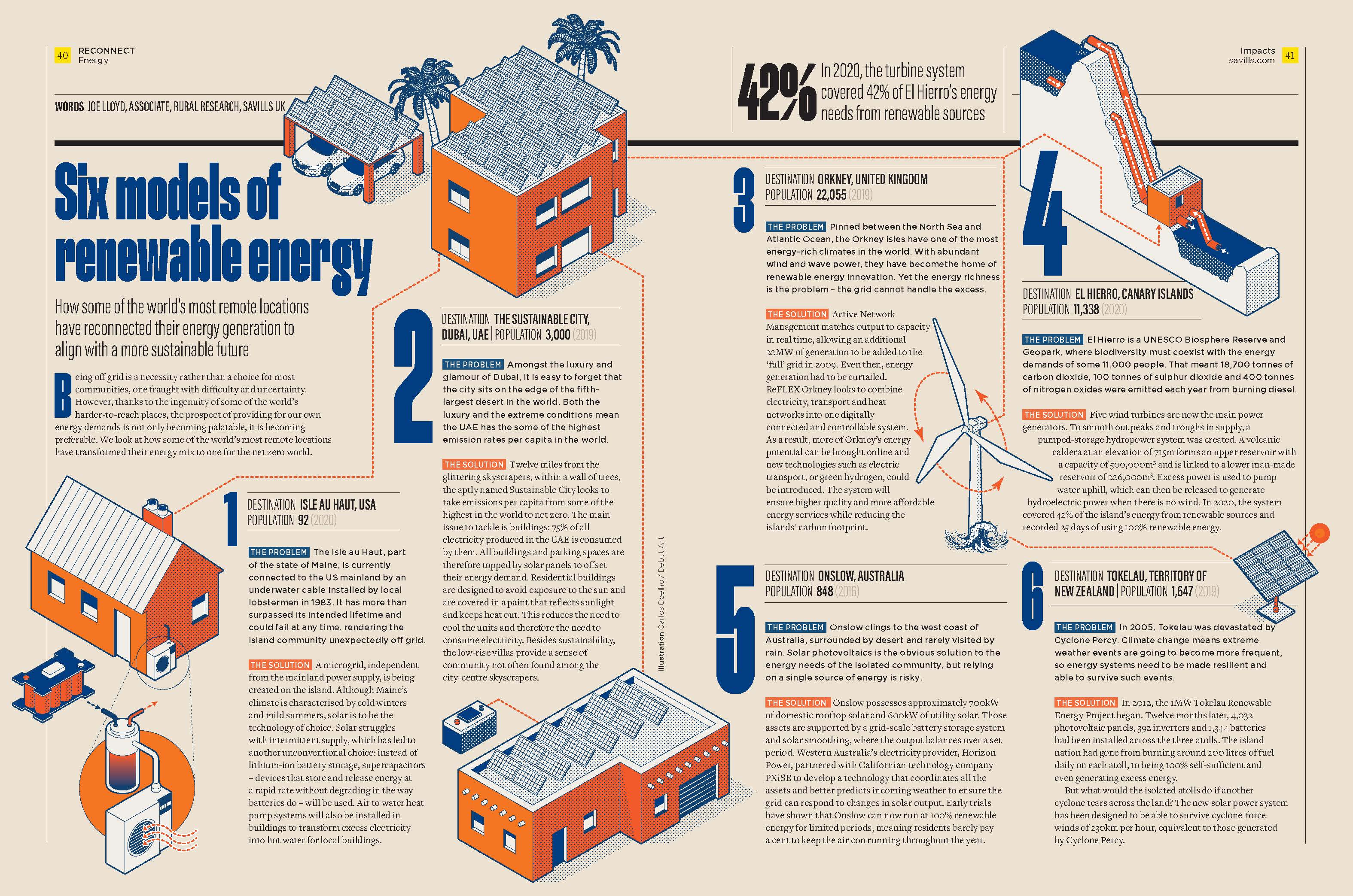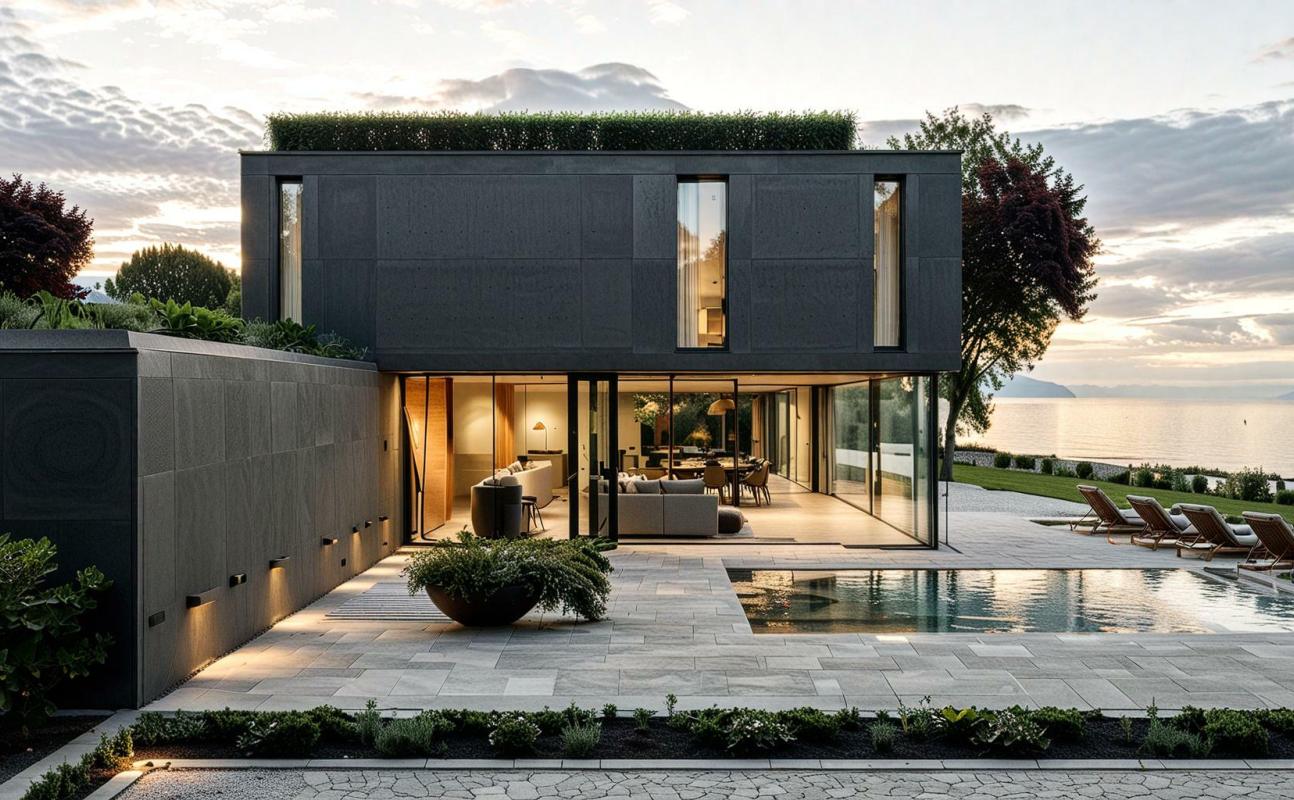

Six Models of Renewable Energy
Discover 6 examples of energy transition in isolated regions.
How some of the world’s most remote locations have reconnected their energy generation to align with a more sustainable future ?
Being off grid is a necessity rather than a choice for most communities, one fraught with difficulty and uncertainty. However, thanks to the ingenuity of some of the world’s harder-to-reach places, the prospect of providing for our own energy demands is not only becoming palatable, it is becoming preferable. We look at how some of the world’s most remote locations have transformed their energy mix to one for the net zero world.
1. Isle au Haut, USA
Population 92 (2020)
The problem
The Isle au Haut, part of the state of Maine, is currently connected to the US mainland by an underwater cable installed by local lobstermen in 1983. It has more than surpassed its intended lifetime and could fail at any time.
The solution
A microgrid, independent of the mainland power supply, is being established on the island of Maine. Despite the region's cold winters and mild summers, solar technology is being favored. To address solar's intermittent supply, supercapacitors are chosen over lithium-ion batteries for energy storage, ensuring rapid energy release without degradation. Additionally, air to water heat pump systems will be installed in buildings to convert excess electricity into hot water for local use.
2. The Sustainable City, Dubai, UAE
Population 3,000 (2019)
The problem
Despite its luxury, Dubai faces high emission rates due to its extreme conditions and opulent lifestyle.
The solution
The Sustainable City, located just outside Dubai, aims to transition from high emissions to net zero. Key focus is on buildings, which consume 75% of the UAE's electricity. Solar panels top all buildings and parking spaces to offset energy demand, while residential buildings are designed to minimize sun exposure and coated with reflective paint to reduce cooling needs. This sustainable approach fosters a sense of community uncommon in urban skyscrapers.
3. Orkney, United Kingdom
Population 22,055 (2019)
The problem:
The Orkney Isles, nestled between the North Sea and the Atlantic Ocean, boast one of the world's most energy-rich climates, abundant in wind and wave power. However, this abundance poses a challenge: the existing grid cannot handle the excess energy.
The solution:
Active Network Management enables real-time matching of output to capacity, allowing for an additional 22MW of generation to be added to the grid in 2009. Despite this, energy generation still had to be curtailed. ReFLEX Orkney aims to integrate electricity, transport, and heat networks into a digitally connected and controllable system. This integration will unlock more of Orkney's energy potential, facilitating the adoption of new technologies such as electric transport and green hydrogen. The system will ensure higher-quality and more affordable energy services while reducing the islands' carbon footprint.
4. El Hierro, Canary Islands
Population 11,338 (2020)
The problem
El Hierro, a UNESCO Biosphere Reserve and Geopark, must balance biodiversity with the energy needs of its 11,000 residents, resulting in significant diesel emissions.
The solution
Five wind turbines now serve as the primary power source, supplemented by a pumped-storage hydropower system. This system utilizes a volcanic caldera as an upper reservoir, allowing excess power to pump water uphill for later hydroelectric generation during calm periods. In 2020, this system provided 42% of the island's energy from renewable sources and achieved 25 days of 100% renewable energy usage.
5. Onslow, Australia
Population 848 (2016)
The problem:
Onslow, situated on the west coast of Australia amidst desert conditions and scarce rainfall, faces challenges in meeting its energy needs. While solar photovoltaics offer a viable solution, relying solely on this energy source poses risks.
The solution:
Onslow has around 700kW of rooftop solar and 600kW of utility solar, supported by a grid-scale battery storage system and solar smoothing technology. Horizon Power, the electricity provider in Western Australia, collaborated with PXiSE to develop a system that coordinates these assets and improves weather prediction, ensuring the grid can adjust to changes in solar output. Early trials have demonstrated that Onslow can now operate on 100% renewable energy for limited periods, resulting in minimal costs for residents to maintain air conditioning year-round.
6. Tokelau, Territory of New Zealand
Population 1,647 (2019)
The problem:
Cyclone Percy devastated Tokelau in 2005, highlighting the need for resilient energy systems in the face of increasing extreme weather events due to climate change.
The solution:
The Tokelau Renewable Energy Project, initiated in 2012, involved installing 4,032 photovoltaic panels, 392 inverters, and 1,344 batteries across the three atolls. This transition allowed Tokelau to become 100% self-sufficient in energy, replacing the daily burning of 200 liters of fuel per atoll. The new solar power system is designed to withstand cyclone-force winds of 230km per hour, equivalent to those of Cyclone Percy.
Would you like to learn more? Read the full article "Six models of renewable energy"
Source : Joe Lloyd Associate, Rural Research, Savills Impacts, May 2022




